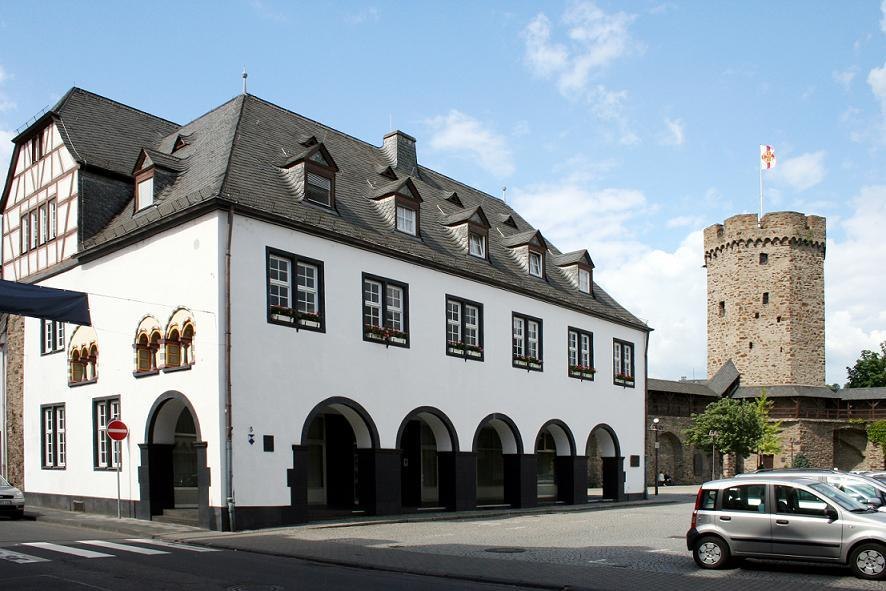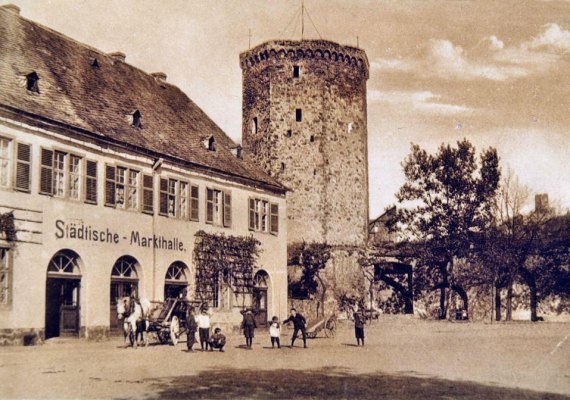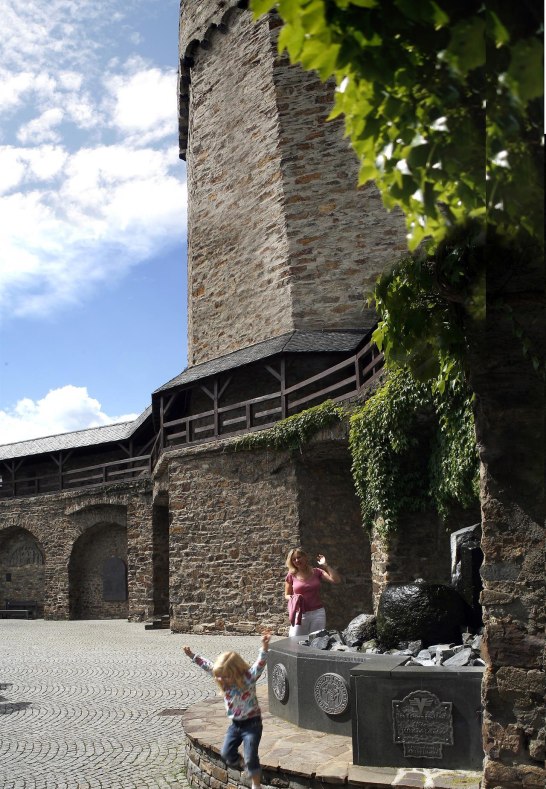00:00 - 23:59
Salhofplatz Square
56112 Lahnstein
Nucleus and Nerve Centre
This is a place where authority is enforced and status displayed. In the early Middle Ages when the Franks seize power on the Middle Rhine, they choose this convenient spot near the mouth of the River Lahn as the location for a manorial residence.
The Salhof is the nucleus of the local Frankish manorial estate. This manor house is the residence of the lord of the manor’s steward. He governs the Salland, the king’s large estate. The agricultural labour is provided by his manor servants, day labourers and the peasants who owe him service under
the feudal system. The Salhof also includes stables and barns, buildings for storing the harvest and tithes, as well as living quarters for the servants. Justice is dispensed in front of the manor house.
In about the year 900 the Salhof and its estate south of the mouth of the Lahn is acquired by the Archdiocese of Mainz. The Archbishops and Electors of Mainz progressively strengthen their power base on the north-western border of their realm. This includes the modification and enlargement of the Salhof. Evidence of this can be seen in the oldest surviving parts of the building, the Romanesque window arches on the west wall dating from 1150 -1170.
The town charter granted by King Louis the Bavarian in 1324 gives Oberlahnstein the right to erect a municipal fortification. Only a few years later the town is surrounded by a mighty, 1280 m long wall with a Zwinger or inter-mural enclosure, an outer wall and a ditch. In addition to Martinsburg Castle, which acts as a corner bastion, the wall is protected by 16 defence towers. Six of these are gate towers. The Hexenturm or “Witches’ Tower” forms the north eastern corner of the town fortification. A dungeon is installed at ground level in the immediate vicinity of the Salhof. During the witch hunts of the 16th century female suspects are imprisoned here.
The Salhof, the Hexenturm and the section of the town wall at the end of the square all survive the ravages of the devastating wars of the 17th century. Baron Johann von Stein, an ancestor of the famous Prussian diplomat, acquires the former royal manor house and has it redesigned and extended in the contemporary Baroque style. In the 19th century the town’s market moves into this prestigious building. At the beginning of the 20th century the Kaiserhof, a luxury hotel, is built on the opposite side of the square to cater for the growing number of tourists and business travellers.
Today Lahnstein’s municipal tourist information office is housed in the historic Salhof, whilst the town administration hosts receptions in the Great Hall. Since 1965 part of Lahnstein’s municipal museum has been accommodated in the Hexenturm, one of the town wall’s six surviving defence towers. The former guardroom of the tower garrison on the second floor is used for marriages and other festive occasions. The Salhofplatz is the site of the largest surviving section of the town wall with a reconstructed battlement walk. In one of the arches of the town wall is a tympanum – a 12th century limestone relief which was originally produced as a door-arch panel for the Romanesque church of St. Martin. Another wall niche contains the Münzbrunnen or ‘coin fountain‘ which displays the town’s crest, coins minted in Lahnstein in the 14th century and coins from a Roman hoard discovered here.
The Stadthalle or civic hall built in 1973 is Lahnstein’s events centre. The colourful ornamental facade and the walls, floors and ceilings inside the building are the work of multi award-winning artist Otto Herbert Hajek. Although relatively modern, the civic hall is already a listed building due to its outstanding design.
This square which is so steeped in history is also the site of a memorial to the terrible fate of Lahnstein’s Jewish residents during the National Socialist dictatorship.




